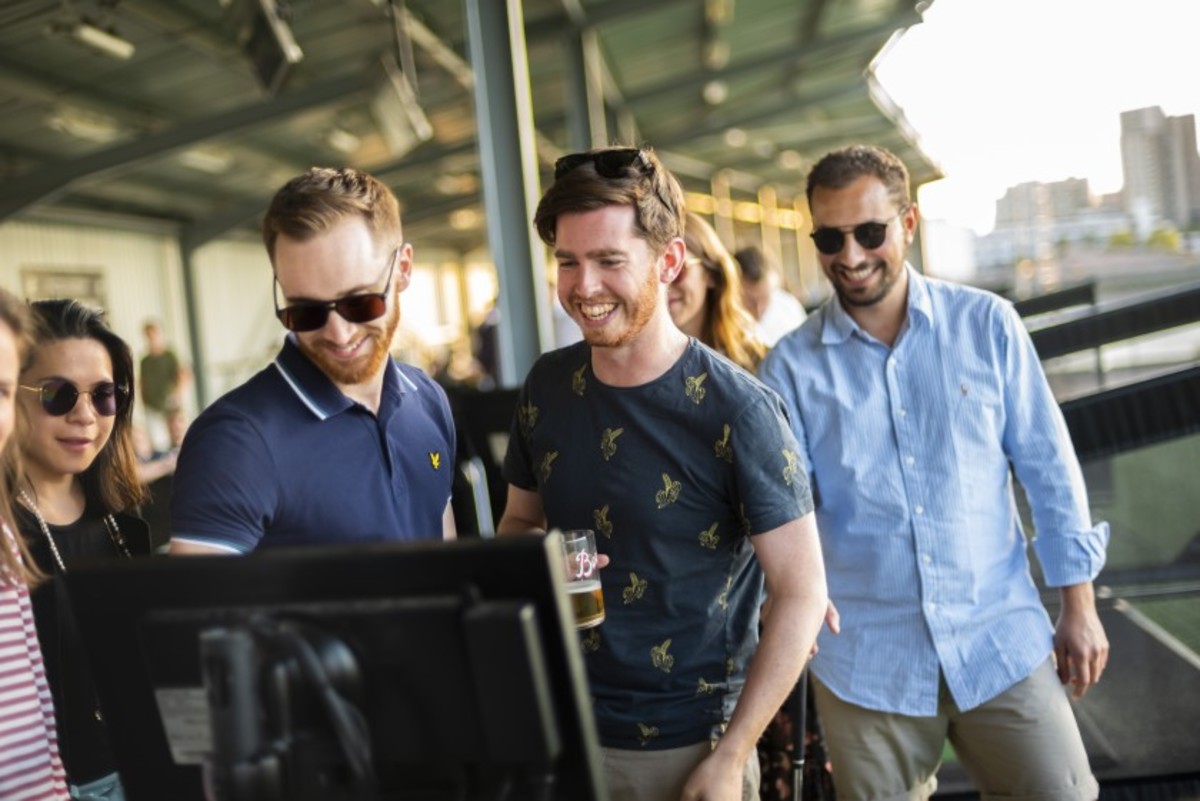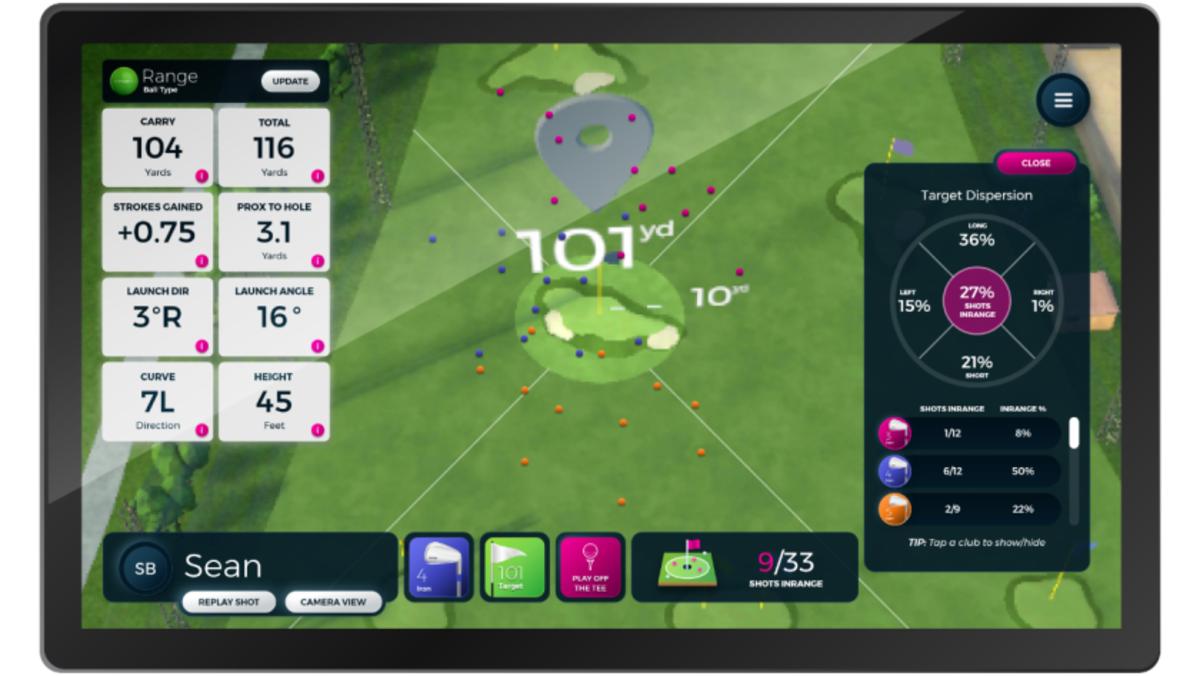Inrange infuses new life, purpose into driving ranges

In 2020, Steve Oakes, owner of the Golf Range at Branchburg, shot off to the annual PGA Merchandise Show in Orlando, Fla., like a heat-seeking missile. Except he didn’t know his target.
By happenstance, while on-site he caught wind of a new product-service system that might help him reimagine his driving range experience.
"We were looking for a different source of revenue,” Oakes said. “I needed one more good thing and went there looking for it.”
As it turned out, with only hours left in the show, Oakes located an email address for Inrange Golf. Shortly after hitting send, Oakes was privy to a demonstration.
“It was not a hard sell,” Oakes said. “This is definitely going to help.”

As of this year, there were more than 56,000 golf driving ranges and family fun centers in the U.S. Golf entertainment services have been growing exponentially since 2016, according to the National Golf Foundation (NGF). Another NGF study on Alternative Golf Experiences found that 52 percent of non-golfers who visited a golf entertainment center had interest in playing on an actual course.
The likes of Topgolf, Drive Shack, Toptracer and others have entered a rapidly growing market that appeals to all talent levels.
It’s a market that now includes Inrange Golf, whose secret sauce is found in real-time analytics crunched via advanced golf ball radar tracking technology from impact to landing point. Sensors, some overlapping, are strategically placed around ranges. Analytics can be viewed on smart phones or driving range entertainment screens.
“Once the radars are installed,” said South African-born co-founder Nick Longley, “they allow us to see every moving object all the time. Rain, sunshine, snow, whatever … pitch black."
Translation: as many range balls that are often in the air simultaneously, the radars can track each one to an almost 99 percent accuracy rate. It does not measure clubface data since the sensors are not in placed in bays.
The concept was bred from work by SJ Marais, Inrange Golf's other co-founder, and an engineering team that the South African engineer led. Marais developed antennae and hypersensitive MeerKAT telescopes and receivers that focused on the Big Bang and other life forms. They’re strong enough to search up to 9 billion light years away.
Marais thought applying FEKO, a computational electromagnetics radar code, to track balls could be utilized in target golf. Or even implemented as a training aid to help the more seasoned golfer improve.

Longley said it’s about making golf more accessible to all, especially the younger demographics and females.
Inrange Golf, whose parent company is Alphawave, uses a service model that focuses on range partnerships and helps them monetize the fun factor.
There are two products: Inrange for the single player interested in practice and progression, and the immersive Inrange Plus, which is geared toward multiplayer engagement. Both can be accessed within a 22-inch screen in range bays or via the phone. Target-based and entertainment games — along with leaderboards, handicaps and post-session analysis — are baked into the products, depending which one is selected.
Longley said in early March that Inrange has penetrated Australia, Europe and the U.S. markets. Currently, roughly 250 bays globally have been equipped — mainly in Australia and England — with Inrange. Longley added that equates to about 3.5 million balls being hit per month using the technology. By year's end, he anticipates having 30 more ranges outfitted and well over 12 million balls tracked.
There are also plans for all Inrange-equipped facilities to offer golfers the ability to play simulated 18-hole rounds (or as many holes as they would like) on some of the world’s most acclaimed tracks, including major championship venues. Longley estimates a full round takes about an hour.
“We want to take away the fear,” said Longley of the first-time golfer. “If I stand in my bay, I don’t have all eyes on me and feel like I can do it. Then when I get to the course, I feel more relaxed. A lot of our pros do this, too.”
In February, an IBISWorld market research report study found that over the next five years, the golf driving range and family fun center industry will continue to grow post-COVID. This is one reason why Oakes searched for another revenue source. The industry has evolved from simply hitting a bucket of balls.
To Oakes’ knowledge, his facility is the first in the U.S. to employ Inrange. Last fall, about 80 bays had the technology installed. It’s not the same as Topgolf, where food and beverage is woven into participation. Oakes said he has food trucks nearby, but it also helps drive down cost.
Oakes was hard-pressed to cite drawbacks.
“We did find that if we have a left-hander and right-hander in stalls next to each other, and they hit the ball at the exact same time — which is rare in itself — there was a minor tracking issue,” he said.
Typically range balls don’t travel as far as course balls. That’s mainly due to the type of ball used. But Inrange compensated for that in its measurement technology.
Oakes, who has owned other ranges in the past, has no reservations that Inrange will help him achieve better returns.
If an early, abnormally warm March day was any indication, Oakes need not worry. The place was packed.
“It’s definitely a model that is advantageous to us and Inrange,” Oakes said. “For those ranges that do any kind of ball volume, it warrants getting into a partnership. But the best part of it all is that it’s fun.”
Sign up to receive the Morning Read newsletter, along with Where To Golf Next and The Equipment Insider.
